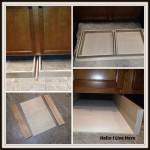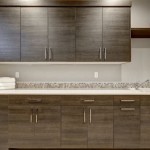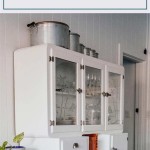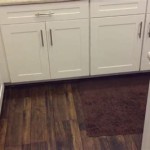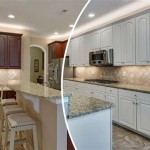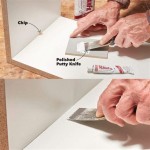What Kind of Paint Do You Use on Kitchen Cabinets?
Choosing the right paint for kitchen cabinets is a crucial step in ensuring a beautiful and durable finish. Kitchen cabinets are subjected to a high degree of wear and tear, including exposure to moisture, grease splatters, and frequent cleaning. Therefore, the paint selected must be able to withstand these conditions while maintaining its aesthetic appeal. Several factors contribute to determining the most suitable paint type, including durability, ease of application, appearance, and cost. This article will explore the various types of paint commonly used for kitchen cabinets, detailing their properties, advantages, and disadvantages, to assist readers in making an informed decision for their kitchen renovation or refresh project.
The selection of paint for kitchen cabinets often involves weighing trade-offs between different qualities. While some paints offer exceptional durability, they may be more complex to apply or require specialized equipment. Conversely, paints that are easy to apply may lack the necessary resistance to withstand the rigors of a kitchen environment. Careful consideration of the specific needs and conditions of the kitchen, as well as the skill level of the applicator, is essential for achieving a satisfactory and long-lasting result.
Understanding the Primary Paint Categories
Paints commonly used for kitchen cabinets fall into two primary categories: oil-based paints and water-based (latex or acrylic) paints. Each category possesses distinct characteristics that influence their suitability for the task. Oil-based paints, historically favored for their durability and smooth finish, have gradually been superseded by advancements in water-based paint technology. Water-based paints are now widely recognized for their ease of use, low odor, and environmental friendliness. Understanding the core differences between these two categories is fundamental to choosing the right product.
Oil-based paints consist of pigments suspended in an oil-based binder, such as alkyd resins. These paints are known for their slow drying time, which allows for excellent leveling and minimizes brushstrokes. The slow drying time also contributes to a harder, more durable finish that is resistant to chipping and scratching. However, oil-based paints release volatile organic compounds (VOCs) during application and drying, which can pose health and environmental concerns. They also require the use of solvent-based cleaners for cleanup, which further contributes to VOC emissions. The use of oil-based paints has been increasingly restricted due to these environmental considerations.
Water-based paints, on the other hand, use water as the primary solvent. They are available in latex and acrylic formulations, with acrylic paints generally offering superior adhesion and durability compared to latex paints. Water-based paints dry quickly, emit low VOCs, and are easy to clean up with soap and water. These properties make them a more environmentally friendly and user-friendly option compared to oil-based paints. While early generations of water-based paints were perceived as less durable than oil-based paints, modern formulations have significantly improved their performance, making them a viable and often preferred choice for kitchen cabinets.
Analyzing Specific Paint Types for Kitchen Cabinets
Within the broader categories of oil-based and water-based paints, there are several specific types commonly considered for kitchen cabinets, each with its own set of advantages and disadvantages. These include alkyd paints (both oil-based and water-based), acrylic latex paints, hybrid paints, and specialized cabinet paints.
Alkyd Paints: Alkyd paints, whether oil-based or water-based, offer a hard, durable finish that is well-suited for kitchen cabinets. Oil-based alkyd paints, as mentioned previously, provide excellent leveling and a smooth, glossy appearance. However, their high VOC content and difficult cleanup make them less desirable for many homeowners. Water-based alkyd paints, often marketed as "alkyd hybrids" or "alkyd-modified acrylics," attempt to combine the benefits of alkyd and acrylic technologies. They offer good durability, low VOCs, and easy cleanup, making them a popular compromise.
Acrylic Latex Paints: Acrylic latex paints are a widely used option for kitchen cabinets due to their ease of application, low odor, and quick drying time. These paints are available in a variety of sheens, from matte to high gloss, allowing for a range of aesthetic choices. While traditional acrylic latex paints may not be as durable as oil-based or alkyd paints, high-quality acrylic formulations specifically designed for cabinets and furniture offer excellent resistance to scratches, chips, and stains. The key is to choose a product explicitly labeled for use on cabinetry and to apply a suitable primer to ensure proper adhesion.
Hybrid Paints: Hybrid paints represent a growing segment in the paint market, combining the properties of different paint chemistries to enhance performance. These paints may blend alkyd and acrylic resins, polyurethane and acrylic resins, or other combinations to achieve specific characteristics. For example, a hybrid paint might offer the durability of an alkyd with the low VOCs and ease of cleanup of an acrylic. These paints often come with a premium price tag but can be a worthwhile investment for achieving a professional-quality finish on kitchen cabinets.
Specialized Cabinet Paints: Several manufacturers offer paints specifically formulated for kitchen cabinets. These paints typically include advanced acrylic or hybrid formulations designed to provide exceptional durability, adhesion, and stain resistance. They often incorporate self-leveling properties to minimize brushstrokes and may be available in a range of sheens optimized for cabinetry. While these specialized paints may be more expensive than general-purpose paints, they can significantly improve the longevity and appearance of kitchen cabinets.
Important Considerations for Selecting Kitchen Cabinet Paint
Beyond the specific paint type, several other factors should be taken into consideration when selecting paint for kitchen cabinets. These include the desired sheen level, the condition of the existing cabinets, the need for a primer, and the application method.
Sheen Level: The sheen level of the paint significantly impacts the appearance and cleanability of the cabinets. Higher sheen levels, such as gloss or semi-gloss, are more durable and easier to clean but can also accentuate imperfections in the surface. Lower sheen levels, such as matte or eggshell, offer a softer, more subtle look but may be more susceptible to staining and require more frequent cleaning. A semi-gloss or satin finish is generally recommended for kitchen cabinets, as it strikes a balance between durability, cleanability, and aesthetic appeal.
Condition of Existing Cabinets: The condition of the existing cabinets plays a crucial role in determining the necessary preparation steps and the type of paint that will perform best. If the cabinets have a smooth, intact finish, a light sanding and priming may be sufficient. However, if the cabinets have a peeling, cracked, or heavily damaged finish, more extensive preparation will be required, including stripping the old finish, repairing any damage, and sanding the surface smooth. The type of existing finish (e.g., oil-based paint, lacquer, varnish) will also influence the choice of primer and paint.
The Need for Primer: Applying a primer before painting kitchen cabinets is generally recommended, especially when painting over a previously painted surface or when using a water-based paint over a glossy finish. Primer serves several important functions: it seals the surface, providing a uniform base for the paint; it improves adhesion, preventing the paint from peeling or chipping; and it blocks stains from bleeding through the paint. The type of primer should be compatible with both the existing finish and the new paint. For example, an oil-based primer may be necessary when painting over an oil-based finish, while a stain-blocking primer may be required when painting over wood with knots or stains.
Application Method: The method used to apply the paint can also affect the final result. Brushing, rolling, and spraying are the three primary application methods. Brushing is the most common method for DIY projects, but it can leave brushstrokes if not done carefully. Rolling can provide a smoother finish than brushing, but it may be difficult to reach into tight corners and details. Spraying, using an airless sprayer or HVLP (high-volume, low-pressure) sprayer, provides the most professional-looking finish, but it requires specialized equipment and skill. Regardless of the application method, proper technique and careful attention to detail are essential for achieving a smooth, even, and durable finish on kitchen cabinets.

How To Paint Kitchen Cabinets Like The Pros

How To Paint Kitchen Cabinets A Step By Guide Confessions Of Serial Do It Yourselfer

How To Paint Kitchen Cabinets Like The Pros

Best Paint For Cabinets Types Of Kitchen

How To Paint Kitchen Cabinets Like The Pros

Painting Kitchen Cabinets Best Tips For A Factory Smooth Finish In My Own Style

Avoid These Mistakes How To Paint Cabinets That Are Already Painted Grace In My Space

Step By How To Paint Your Kitchen Cabinets

How To Paint Your Kitchen Cabinets The Prairie Homestead

What You Need To Know Before Painting Cabinets The Palette Muse
Related Posts

